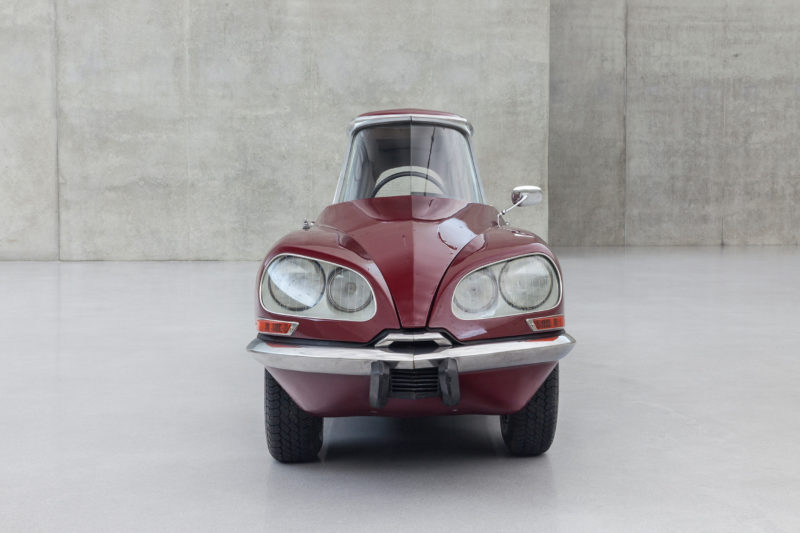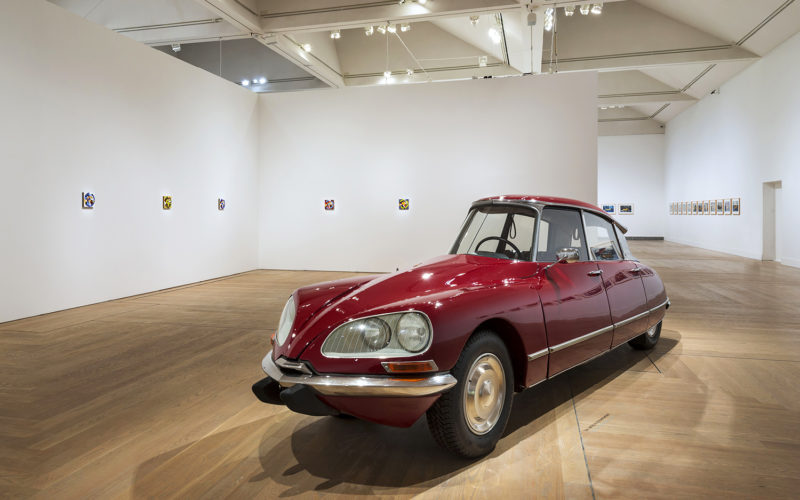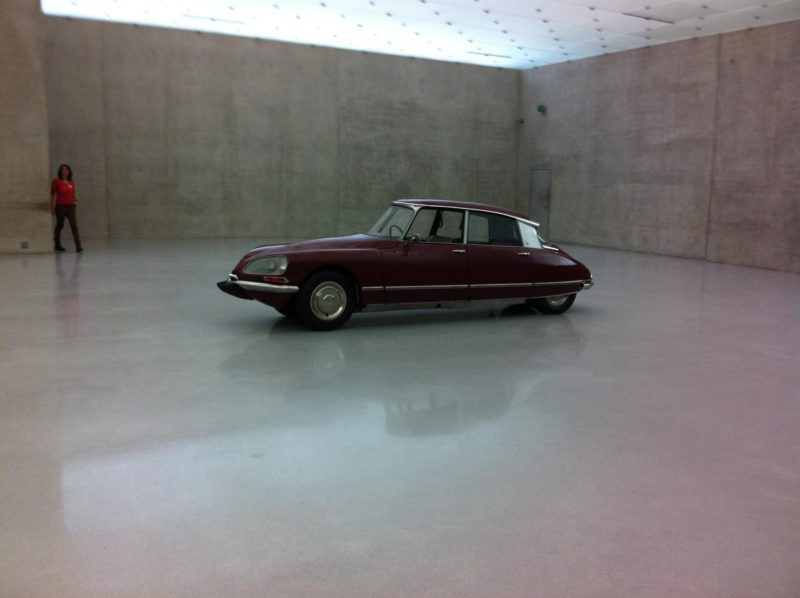
Introduction
La DS, pronounced as La Deese in French, is an artwork by celebrated Mexican 1 artist and sculptor Gabriel Orozco 2. He created La DS from a disassembled Citroen DS, one of the most iconic French vehicles of the mid-20th century.


How it was made
The first La DS was made with Orozco’s childhood imaginations that a sleek car would be faster. He disassembled a Citroen DS with the help of his friend and assistant Phillipe Piccoli to remake it in the form of a sleeker silhouette that evokes illusions of speed while it cannot move an inch.
Orozco removed the middle part of the vehicle, then reattached the two outer thirds into one very sleek but immovable car because the engine was removed as well. Orozco created the first La DS in 1993, and made a replica in 2013.

The second edition
Orozco dubbed the second edition of La DS, the Cormaline (2013). It was a replica made from the same car model, but while the first was in polished bluish silver, the replica was in scarlet red. His stay in Havana, where vintage cars are in plenty, also played an inspiring role in this second edition.
While vintage cars in the rest of the world are highly valued and seen as symbols for the wealthy car collectors, they are crucial means of mobility and less of status symbols. Again, the contrast of status symbols and impotence was playing out in this work of art. This artwork was for the Northern European circuit of exhibitions, where the earlier La DS had not been exhibited.


Analysis
In this work, Orozco was trying to achieve ‘anamorphisms’, which creates the illusion of the deformed as a whole. La DS looks like a complete Citroen DS when seen from the side, the eye only seeing something amiss when the car is viewed from the front; the steering wheel is in the middle. La DS’s doors and windows can be opened and locked, and there is a seat for only one person.
Orozco meant to force the viewer to confront the duality of power and impotence. In an increasingly materialistic world, people tend to assign certain symbols to objects they create, just like the power and speed illusion of La DS. Yet when this symbolism is removed, the inanimate object remains impotence and of no use, just like the engineless La DS.
Both editions of La DS have made tours in Northern America and Europe alongside Orozco’s other works in photography, painting, and sculpture.



